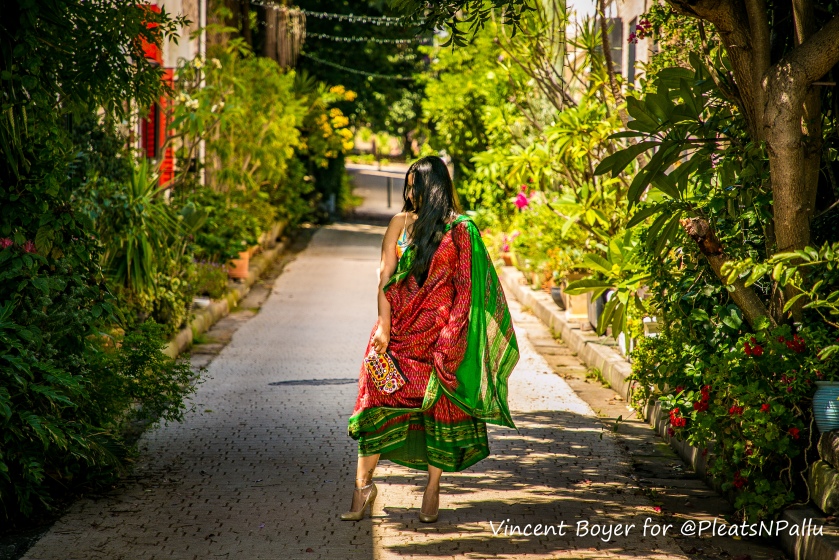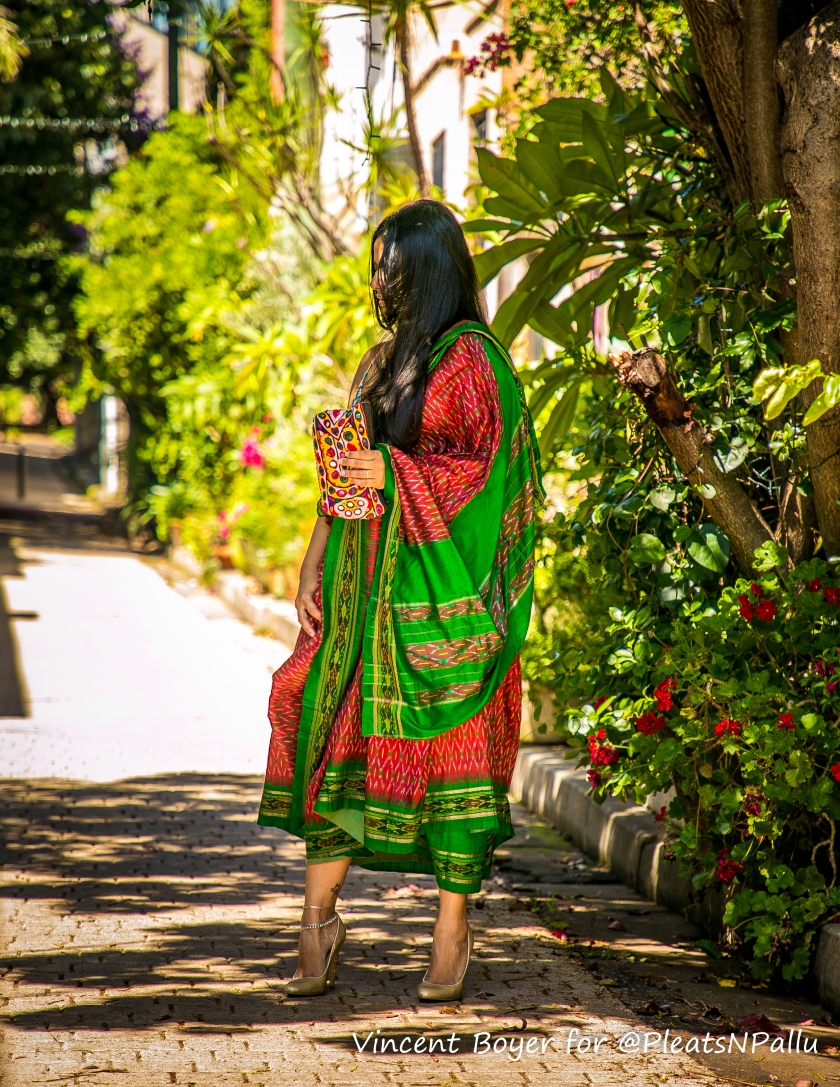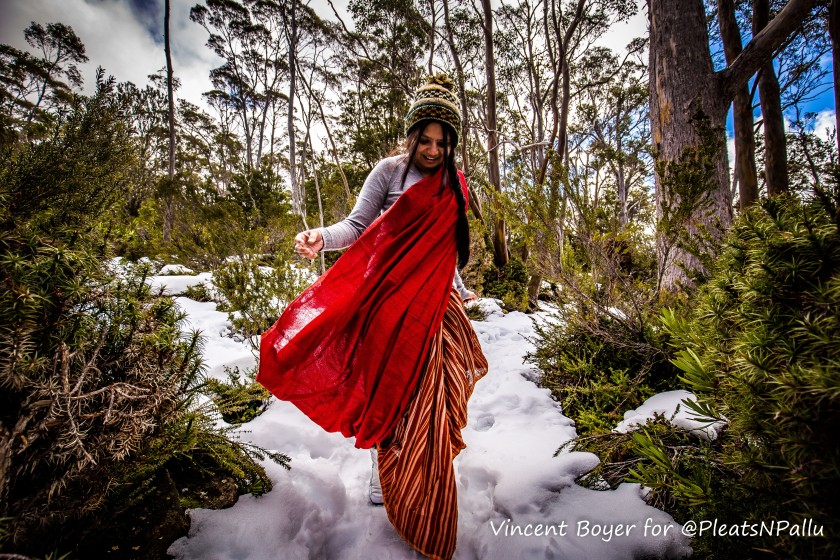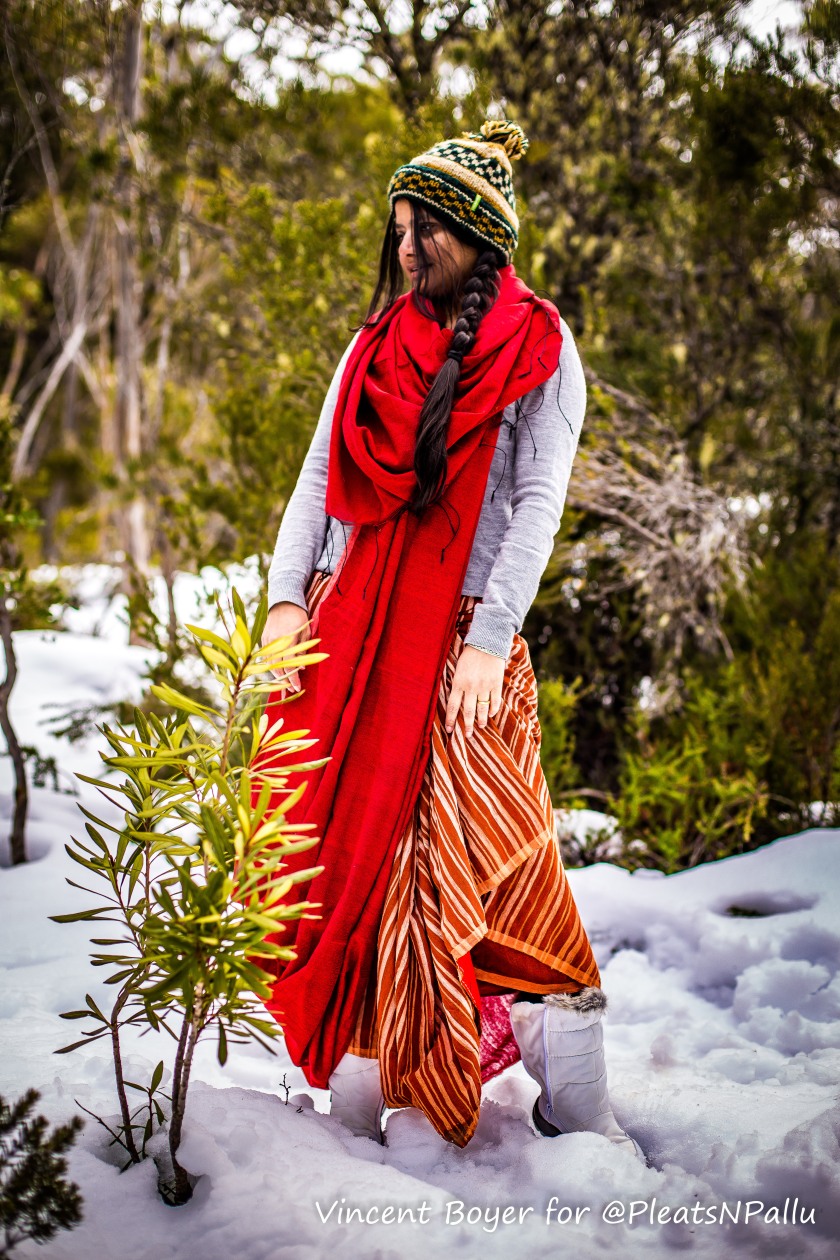Silk sarees don’t have to be limited to special occasions and can be worn casually while going about everyday activities, one must just choose the right kind of low-maintenance weave that ensures comfort…



Photos: Vincent Boyer (Say hi on instagram @vincetravelbook)
This is part one of a two-part series on silk sarees that I love to wear for everyday pursuits because they render themselves beautifully to casual activities. I have a previous post on silk sarees I love during the festive season that you can peruse here.
Many of us have silk sarees that we tend to put aside and never find the right occasion to wear them because they are not grand enough for the fancy festivities but they are also not perceived to be as comfortable as every day wear.
In no particular order of preference, here is a lineup of the handloom silk sarees that I reach for when I am out and about on an everyday basis:
-
- Ikat silk sarees from Odisha, Andhra or Gujarat: I have a massive thing for ikats from all over the world and find them extremely suitable for every day as well as fun occasion wear. The saree I am wearing in the photos is a vintage Pochampally silk which has softened with age and just feels like I am floating in a delectable cloud. I wore it over a bright swimsuit sans a petticoat or safety pins, for brunch before heading to a little bay with the fur baby and spending the whole afternoon splashing around with her.
More examples of ikat silks worn casually here, here and here. - Khadi matka silk from West Bengal: Hand spun and hand woven silk khadi more often than not has some amount of cotton yarn in the mixture. Matka silk is what many people colloquially refer to as raw silk, it has a rough texture and is woven in the towns of Malda and Murshidabad in West Bengal.
- Arani silk sarees from Tamilnadu: These lightweight silk sarees are woven in Arani in Tiruvanamali district in Tamilnadu. According to handloom weavers I’ve spoken to, the yarn used to make these sarees are two or three ply unlike the four ply used in Kanjevarams, which is what makes these sarees easier to manage in my opinion.
- Kuchai silk sarees from Jharkhand: This organic variant of wild silk popularly known as tussar, is produced in the Kuchai region that is spread over Seraikela-Kharsawan district in Jharkhand. The cocoon for this silk grows on Sal and Arjun trees and according to a Jharcraft spokesperson this is the first Indian fabric to receive an international organic silk registration.
- Mysore silk sarees from Karnataka: These vibrant hued GI tagged fabrics that are subtle when it comes to motifs on the body are produced by Karnataka Silk Industries Corporation Limited (KSIC) in Mysore. The erstwhile princely state has been manufacturing this textile since the turn of the last century and a present day original Mysore silk has a unique code number and hologram stamped as identification marks on each of its zari sarees.
- Mashru silk sarees from Gujarat: This delectable fabric is a handwoven, interlaced mix of silk warp and cotton weft with a characteristic fine satin finish and bright contrasts in bold colours. The word ‘Mashru’ means ‘permitted’ in Arabic, its Sanskrit variation ‘Misru’ means ‘mixed’ and it is believed that this textile got this name when Muslim men, who were not allowed to wear silk, started wearing this fabric. It is currently predominantly manufactured in Patan and Mandvi in Gujarat, India.
- Molakalmuru silk sarees of Karnataka: These mulberry silk fabrics are named after their place of origin, Molakalmuru, a small town in the Chitradurga district of Karnataka, near the state border with Andhra Pradesh. The silk sarees made here are also known as ‘Karnataka Kanchipuram’, I particularly love the ones with abstract temple motifs and reach for them again and again.
- Ikat silk sarees from Odisha, Andhra or Gujarat: I have a massive thing for ikats from all over the world and find them extremely suitable for every day as well as fun occasion wear. The saree I am wearing in the photos is a vintage Pochampally silk which has softened with age and just feels like I am floating in a delectable cloud. I wore it over a bright swimsuit sans a petticoat or safety pins, for brunch before heading to a little bay with the fur baby and spending the whole afternoon splashing around with her.
I love wearing my silks regularly even in the hotter months of the year and I like to think that they benefit from the airing! I will have the next post detailing the next bunch of silk weaves, that I love to wear on a daily basis up soon.



